Daytona International Speedway is undergoing its first major renovation in 55 years. Its first ever, really. On a recent visit, we found out just how far 36 million tonnes of steel, miles of fibre and an eye towards the future will take an ageing behemoth — one that can swallow 14 football stadiums whole.
Full disclosure: International Speedway Corporation, the company that operates Daytona International Speedway, covered my travel to Florida and two nights’ accommodations to see and hear about the massive construction project. Food and drinks were included, sunscreen was not.
Daytona operates about 250 days a year, hosting races for sports cars, motorcycles, go-karts, and thanks to an infield lake, even the occasional powerboat competition. But the largest spectator and TV event at this racetrack — and one of the nation’s most popular sporting events — is the Daytona 500, the opening race of the NASCAR Sprint Cup season.
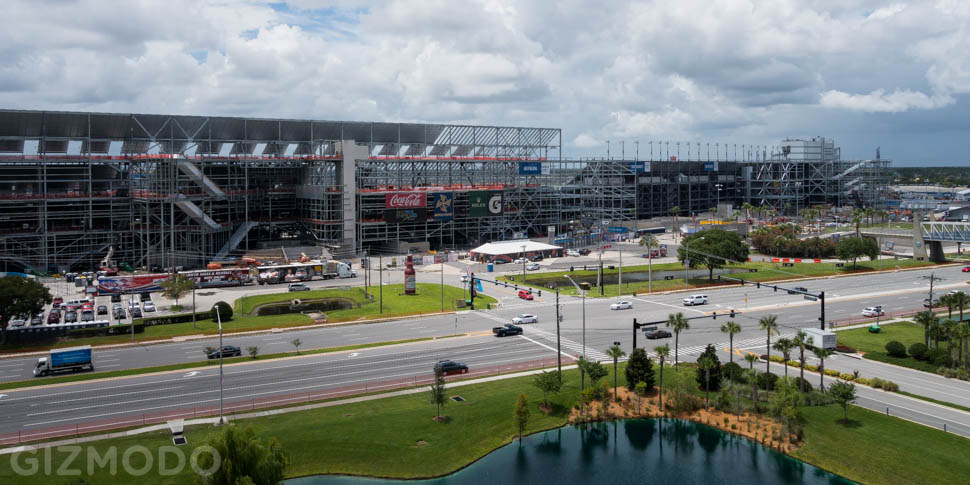
That means fans filling every one of Daytona’s 147,000 seats, some of which are the original folding metal chairs installed in 1959. Add to that a seven-story climb to reach the nosebleeds (where you get the best view of the 4kmm oval), trough-style urinals in the men’s restrooms, and no shelter from the near-daily coastal rain showers, and Daytona feels less like a major motorsports attraction and more like a gigantic high school football stadium.
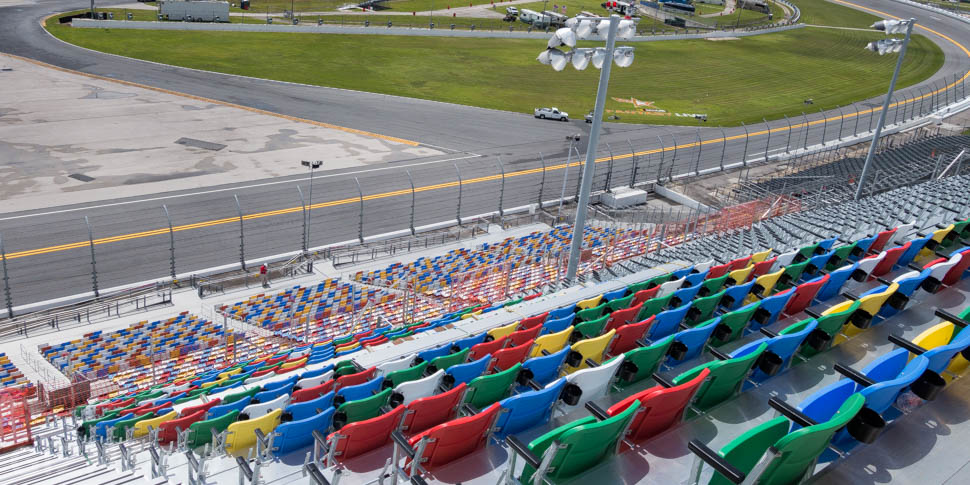
The view from the current top row. When complete, 30 more rows will rise above this point. The seats nearest the track, original metal folding chairs, will disappear.
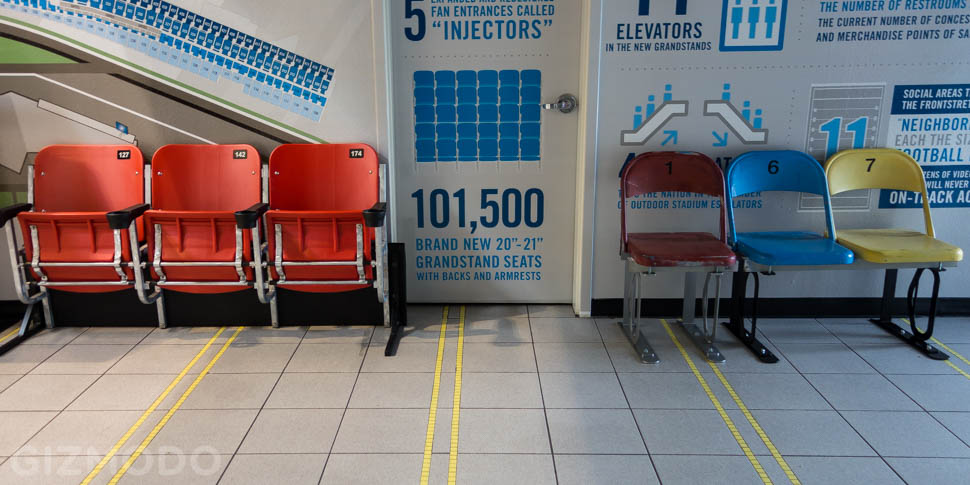
Fifty-five years of seating innovation separate the old and new perches.
Daytona Rising, an extensive $US400 million renovation, aims to remedy that. The project, which broke ground in 2013, will double the number of restrooms, triple the concession stands, and add a spate of luxury suites. It will also create 11 “neighbourhoods”; shaded, Wi-Fi-equipped areas where fans can gather to relax or (more likely) take shelter from sun or showers alike. Daytona Rising will extend the grandstands up by seven stories, adding 40 elevators and 14 escalators for access.
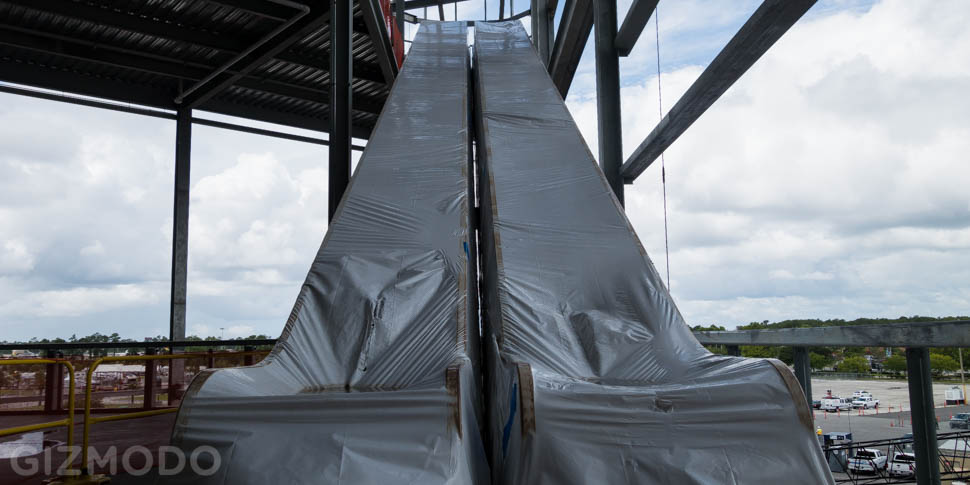
International Speedway Corp. wants Daytona to be a “racing stadium”, as spacious and well-appointed as the newest NFL and NBA facilities. That means converting what’s mostly been a concrete pit for die-hard racing fans into a more modern and inviting space. “People don’t go to sports events anymore,” Daytona International Speedway’s president Joie Chitwood told me. “They go to social events that involve sports.”
It also means bringing race day into the 21st century. Brandon McNulty, International Speedway Corp.’s chief technology officer, wants a more immersive, personalised experience for fans in the stands. Flip on a NASCAR race on TV, and you’ll see what he’s up against: The screen fills with gauges and graphs telling you each car’s speed, acceleration or braking, and lap time, all in real-time. Not to mention the hundreds of different camera angles around the track and inside the cars.
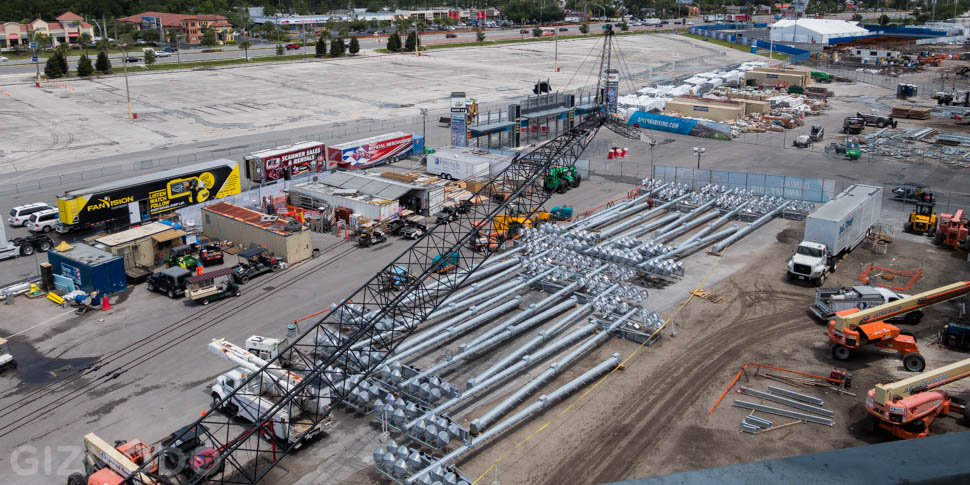
As new fans start displacing NASCAR’s old guard in the stands, they bring with them the expectations of both TV audiences and tech natives. “The younger demographic is more demanding,” McNulty told me. “Big video is great, but fans want to see replay whenever, not wait for the screen in the infield. There are expectations that these things are available.”
McNulty is eyeing ways of bringing that data-immersive experience to the grandstands. “We have this computer in each racing car. The cars are fully instrumented. How do we get that into fans hands?” he asks. “What tech can we provide fans to understand what’s going on on the track in front of them?”
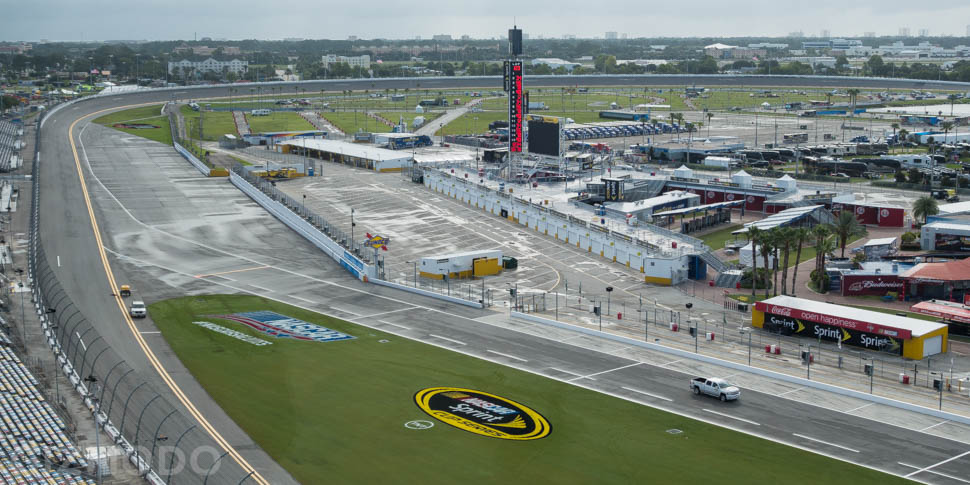
Step one in revamping Daytona is laying the infrastructure: Replacing miles of original coaxial cable with fibre optic and ethernet, increasing cell phone coverage (and eventually Wi-Fi) for fans, and beefing up communications support for the 1,200 media that descend on the track for the Daytona 500.
Once that’s in place, McNulty can start working to bring his vision of a “Minority Report meets Star Trek” experience to the fans in the stands. That enhanced experience could come through wearables, Google Glass, or more likely, through the smartphones already wandering the track in their pockets.
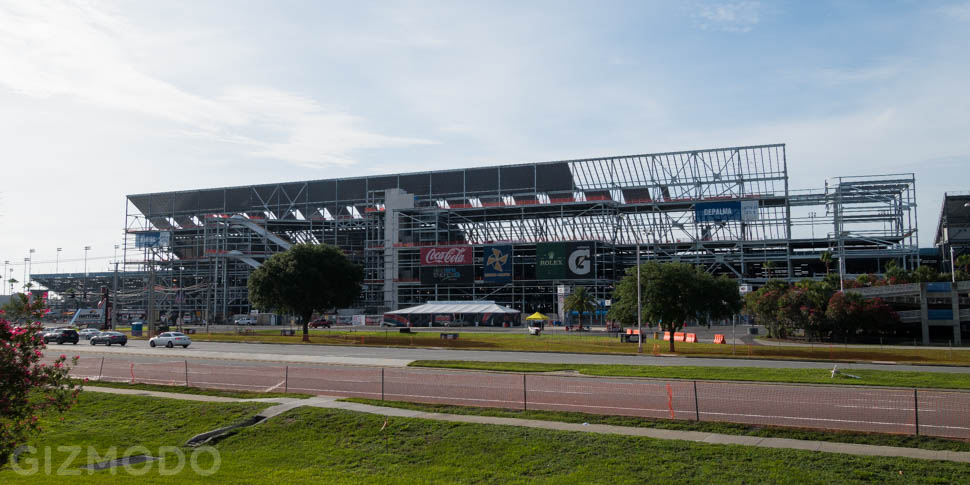
The existing grandstands end at the top of the Gatorade and Coca-Cola signs; above them, the beginnings of 30 rows of new seating.
“What I want to do is understand enough about the fan, whether it’s individualized or generalized, that I can give them information that’s relevant to them that makes their experience better,” McNulty said. “The challenge is opt-in. How do I incentivise the fan that what I’m doing will make the experience better? I don’t want to be Big Brother and look at what you’re doing, I want to find a way that what I’m actually doing is relevant and useful to you.”
McNulty painted the scene for me: Upon entering the grounds of Daytona International Speedway, you’d get a notification on your phone, telling you which of the five newly-built entrances (“Injectors” in Daytona’s parlance) will bring you closest to your seats. If you’re a regular at the track, maybe it would recognise how often you visit, and offer you a discount on a beer or a hot dog.
When the race is over, your phone would know which off-site lot you parked in. You’d get a message confirming your reserved seat on the 9:45PM shuttle to your lot, and traffic updates telling you which route is the quickest to return home or to your hotel.
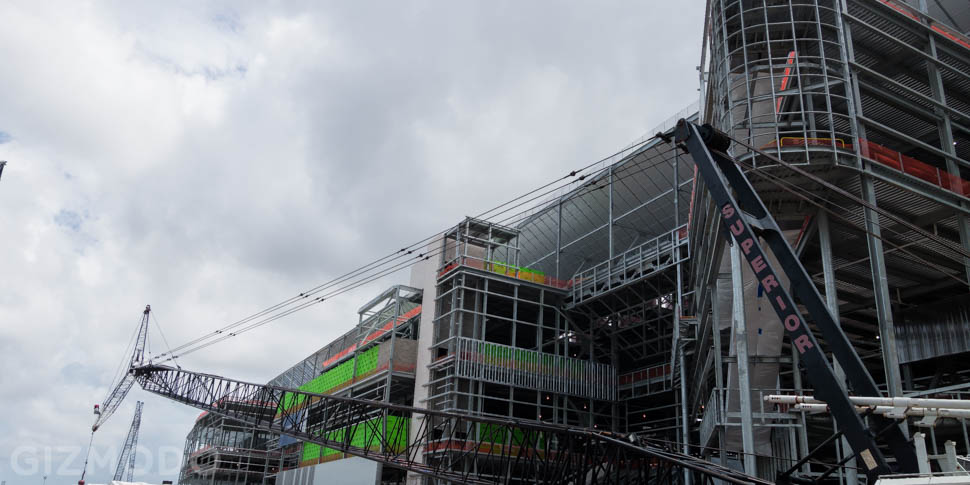
This vision would require building an app that not only knows where you are on-site, but that you’d trust with information about basically your entire trip to Daytona. There’s a challenge in convincing any crowd, NASCAR or otherwise, to opt-in to tracking like this. Race weekends are a time for fans to kick back and relax, not parse terms and conditions.
So how do you bring an app with beacon-powered push notifications to a race track that allowed smoking in the grandstands until 2012? “We have to be very well aware that we have a current and existing fan base that’s an older demographic, that may not be as mobile-tech or socially connected,” McNulty said. “But we have to be prepared for the younger demographic, and their expectations are only growing day by day.”
In order for this dream to become real, fans would have to choose e-tickets — which offer the facility valuable user information — over dataless paper tickets that are so easily handed off (or sold). It’s up to McNulty and his team to convince fans of the value of the system, and somehow reassure them that it’s not an Orwellian ploy. “We need to identify fans, we need to help our partners build their ROIs [Return on Investments] so they stay in the sport,” he told me. “But we have to be very careful all along about making sure that we don’t cross any line where we turn into Big Brother.” And yes, that’s the second time Big Brother came up in our conversation. It also wasn’t the last. Clearly it’s an area of concern.
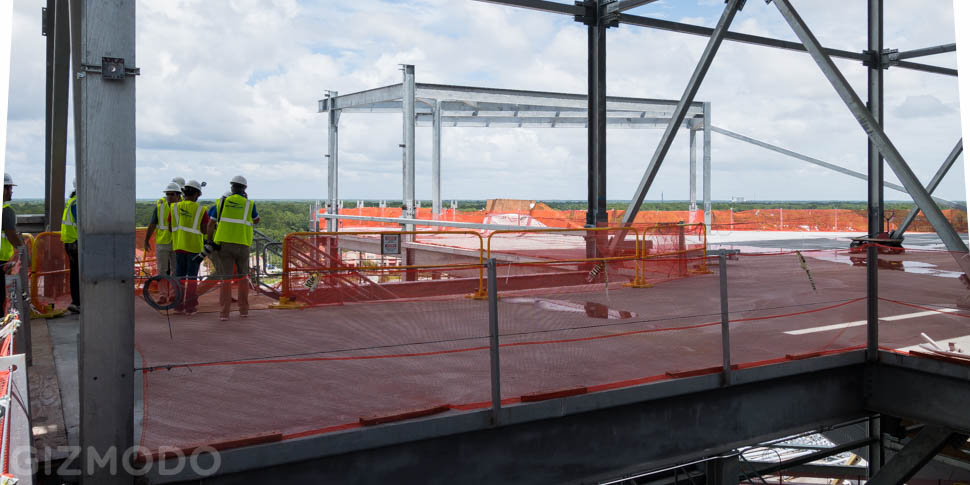
Also of concern? How to deliver of that technological advancement to the massively updated new race facility. It’s a huge undertaking. Rossetti, the design firm handling the project, specialises in sports stadiums and arenas. But with a main concourse that spans the full length of the track’s one-mile front stretch, Daytona’s 2.5 million square feet presented a completely unique challenge. Indeed, as we saw during an engineering presentation, Daytona’s footprint could swallow nearly 15 Meadowlands — sorry, MetLife — Stadiums.

With a project of this size, the steel alone could give a construction foreman nightmares. 40 million pounds of it will make up the skeleton of the new Daytona, a full one per cent of the U.S.’s annual steel output. Thankfully, each of the 40,000 beams is tagged with a barcode and checked by iPad-wielding engineers to make sure it’s headed right where the blueprints instruct it.

Those “blueprints” are neither blue nor printed; for this project, traditional schematics were replaced by a massive, hard-drive-sized 3D rendering. The wireframe was built from a virtual “point cloud” of the existing structure, measured using a laser scanner to give engineers the exact dimensions of the old grandstand without having to break out tape measures and surveyor’s equipment. The 1959 structure is solid, but a bit haphazardly laid out: The grandstands follow the exact curve of the track in some spots, and ignore it completely in others.
Construction is slated for completion in 2016. Thanks to an elaborate dance of alternate entrances, temporary ticket gates, separated walkways through construction zones, and temporary seating arrangements, the plan is for the track’s 250-day-a-year event schedule, including NASCAR’s Daytona 500, to go undisturbed by construction.
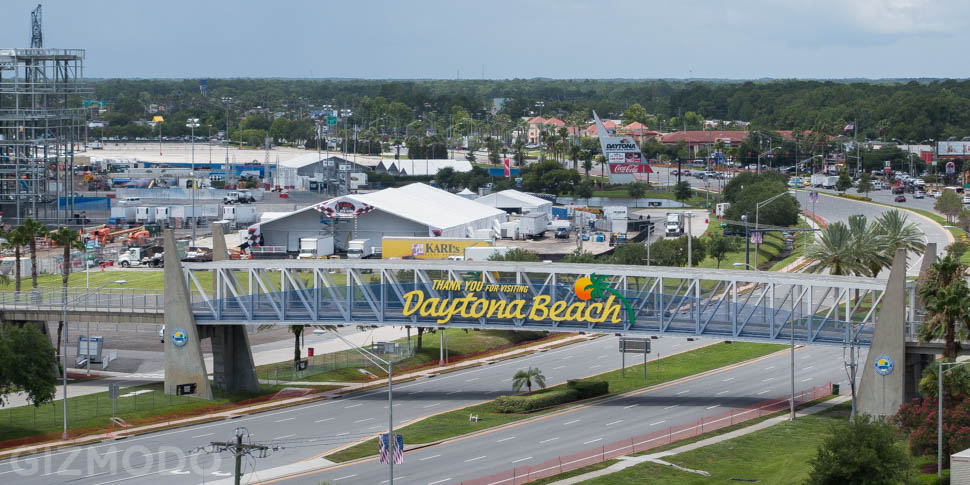
If all goes to plan, Daytona Rising could bring a huge shift in the live racing experience. Much remains to be seen: Will the raceway be able to deliver on its grand vision for fan interaction? Will the enhanced experience be enticing enough for fans to opt in? Will a shiny new “racing stadium” help attract the kind of fans that don’t already come to the track decked out in their favourite driver’s gear?
Bill France Sr built Daytona International Speedway as a permanent home for the loosely-sanctioned racing that used to go on at the sandy beach not far down the road. Motorsports — cars, drivers, fans, and all — have come a long way since then. But it’s more clear than ever that in Daytona, there’s no such thing as slowing down.
